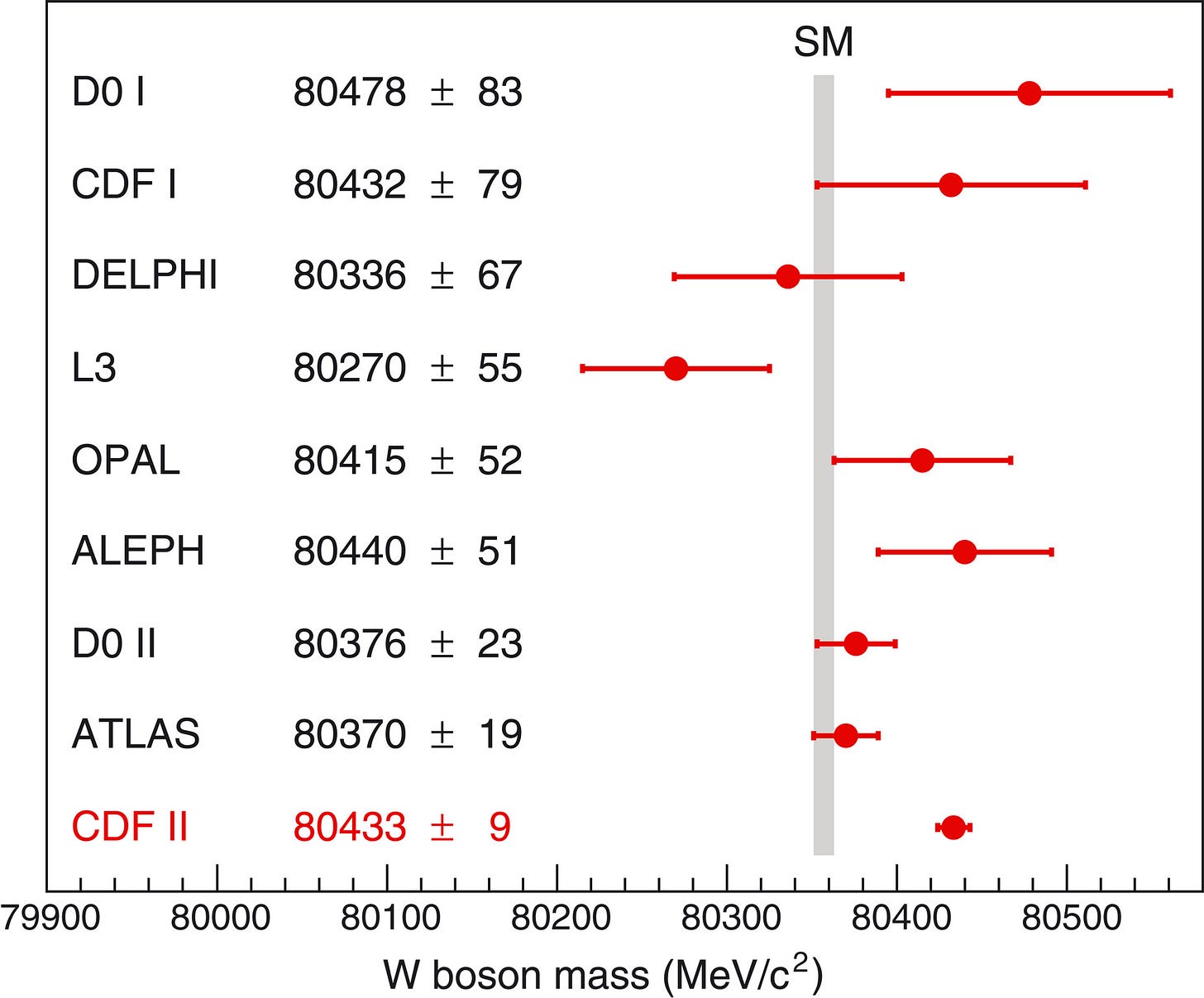A New Colour, A Stephen Hawking Theory, & The W-Boson Anomaly
This week’s science bits from SWTG
Scientists Make People See Unreal Colour
Researchers at the University of California, Berkeley, and the University of Washington have created a colour that lies outside the natural range of human vision. The team developed a technique they call “Oz” that uses tiny laser pulses to stimulate individual photoreceptor cells in the eye. By targeting only the M-cones (one of the three types of colour-sensitive cells), they produced a vivid blue-green hue that participants said was unlike anything they had ever seen – so, unfortunately, I can’t show it to you! The researchers named the new colour “olo,” and say it could open the door to entirely new ways of seeing and displaying images. Paper here.
Fermilab Doubles Down on W-Boson Anomaly
Figure: The 2022 CDF result (bottom) is incompatible with the Standard Model prediction (grey bar) at high significance because of the supposedly small error bar. Credits: CDF
In 2022, the CDF collaboration at the (no longer operational) Tevatron at Fermilab in the USA shocked the world of particle physics. They announced that they had reanalysed data and found that the mass of the W-Boson is too high to be compatible with the Standard Model. They reported a result with a statistical significance of seven sigma. Such a big discrepancy could mean the presence of additional particles not accounted for by our current theories.
The likely culprit in this analysis is that the collaboration underestimated the error of their analysis. In a publication that just appeared in Phys. Rev. Research, Ashutosh Kotwal of the CDF collaboration defends the analysis method. It is worth noting that the paper is single-authored and not from the collaboration, which likely signals some internal disagreement.
The LHC’s ATLAS and CMS collaborations have both reported that they found a result compatible with the Standard Model.
Artificial Neural Network Works at Light-Speed
Scientists from the University of Pennsylvania have, for the first time, succeeded in building a photonic chip that can perform nonlinear operations. Photonic chips, as the name suggests, operate with photons, and can hence, in principle, work at extreme speeds. They can be used as neuromorphic chips whose hardware resembles the neural networks used for AI training. This is relatively straightforward for linear operations that can be performed by splitting or combining beams of light, but such linear operations cannot simulate threshold effects that are typical of firing neurons. The researchers achieved these nonlinear effects by using light-responsive semiconductors. Paper here, press release here.







